Co-Working Space Interior Design: Creating Functional and Inspiring Work Environments
In recent years, co-working spaces have become incredibly popular, changing how people approach work. A big part of what makes these spaces successful is their interior design. This design isn’t just about making things look nice; it’s about creating an environment that sparks creativity, encourages collaboration, and boosts productivity. Throughout this article, we’ll delve into the world of co-working space interior design, covering everything from the initial ideas to putting them into practice. We’ll also take a look at why these spaces are in such high demand in today’s work culture.
Co-Working Space Design Concept
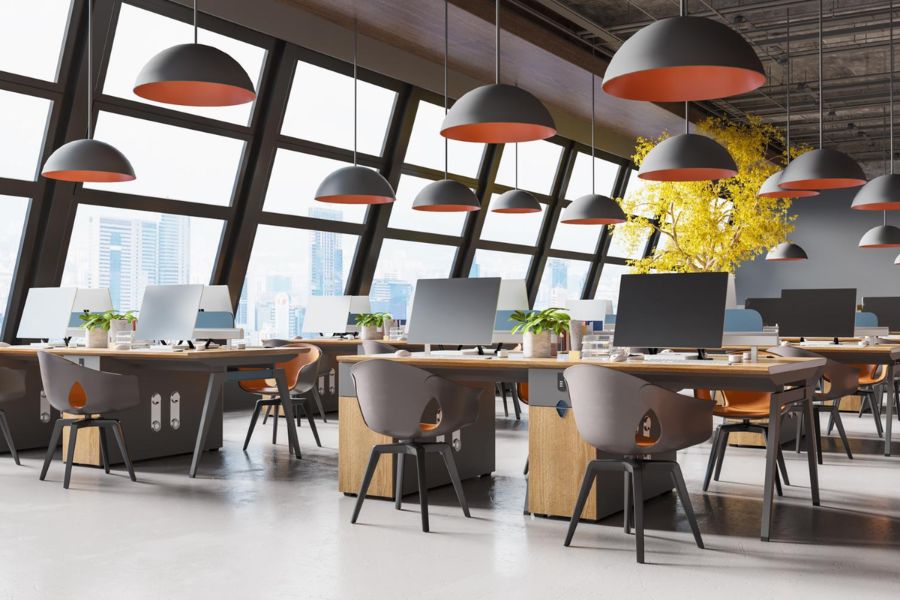
Understanding the Purpose of Co-Working Spaces: Co-working spaces aren’t just places to work – they’re dynamic communities where people can come together, share ideas, and support one another. Designers need to understand this fundamental purpose. These spaces should feel inviting and inclusive, encouraging people from different backgrounds and industries to connect and collaborate.
Incorporating Flexibility and Collaboration: Flexibility is key in co-working space interior design. Designers should think about how to create layouts that can easily adapt to the changing needs of users. This means using modular furniture, versatile spaces, and communal areas where people can gather and brainstorm. By fostering a sense of openness and collaboration, designers can help cultivate a vibrant and dynamic atmosphere.
Balancing Privacy and Openness: While co-working spaces thrive on collaboration, they also need to offer privacy when it’s needed. Designers must strike a balance between open areas for collaboration and private zones for focused work or confidential discussions. This might involve using soundproofing materials, adjustable partitions, or cozy nooks where individuals can retreat when they need some quiet time. Finding this balance ensures that everyone feels comfortable and respected in the space.
Elements of Interior Design
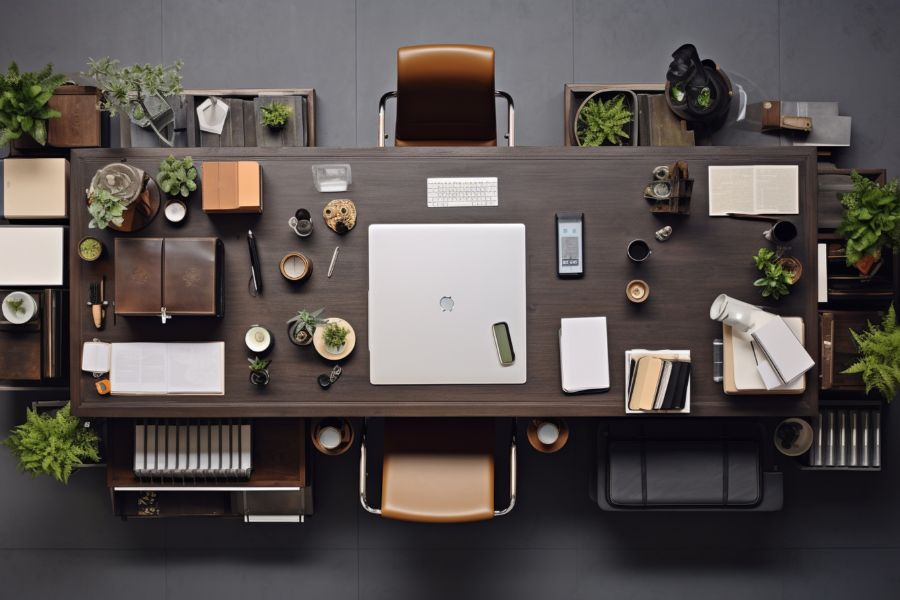
Spatial Planning and Layout: Spatial planning is like laying down the foundation for a house – it’s crucial for creating a co-working space that’s both practical and welcoming. Designers need to make the most of the available space, making sure it’s easy to move around and that every corner feels inviting. By dividing the space into different zones for different activities, like working solo or collaborating with a team, designers can help improve workflow and make the space more user-friendly.
Furniture Selection and Arrangement: Think of furniture as the tools that help make a co-working space functional and stylish. Whether it’s choosing comfy chairs or versatile desks, every piece should be chosen with care. Flexible arrangements mean that users can adjust things to suit their needs, making the space feel more like their own. This not only boosts comfort but also helps foster a sense of belonging among users.
Lighting Design: Lighting isn’t just about making sure the space is bright enough to work in – it’s also about creating the right mood. Natural light is a real mood booster, so designers should try to let in as much sunshine as possible. A mix of different types of lighting, like overhead lights and task lamps, can help create a cozy atmosphere and make it easier to see what you’re doing. Plus, using energy-efficient lights is not only good for the environment but also helps keep costs down.
Textures, Materials, and Finishes: Paying attention to the little details, like the textures and materials used in the space, can really make a difference. Think about how things, like exposed brick walls or cozy fabrics, can add personality and warmth to the environment. Choosing eco-friendly design materials not only shows a commitment to sustainability but also helps create a healthier and more pleasant space for everyone.
Why Co-Working Space is in Demand Nowadays
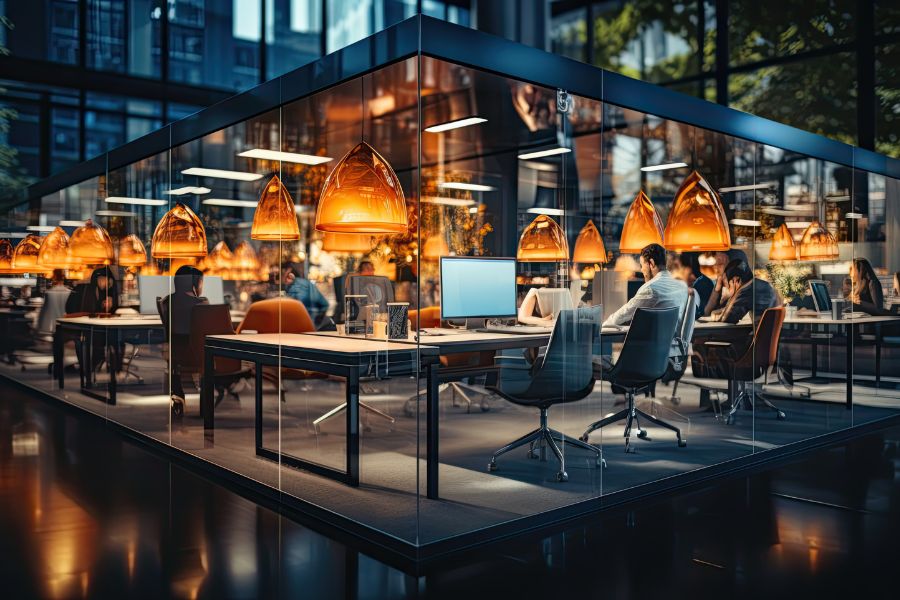
Shift in Work Culture: The way we work has been changing, big time. Gone are the days of strict 9-to-5 schedules in dreary office cubicles. Nowadays, people want flexibility and collaboration. They want a space where they can get stuff done but also feel comfortable and connected. That’s where co-working spaces come in handy. They offer the best of both worlds – a professional setup with a cozy vibe.
Benefits for Freelancers, Startups, and Remote Workers: Co-working spaces are like goldmines for freelancers, startups, and remote workers. Freelancers love the sense of community and networking opportunities these spaces provide. Startups dig the low costs and the chance to meet potential collaborators by chance. And remote workers? They’re all about the escape from loneliness, soaking up the energy of working alongside others while still calling the shots.
Cost-Effectiveness and Shared Resources: Let’s talk money. Co-working spaces are super affordable, especially when you consider what you’re getting. By sharing expenses like rent and utilities, everyone chips in a little, making it way cheaper than renting a whole office. Plus, you get access to cool stuff like lightning-fast internet and meeting rooms without having to foot the entire bill. It’s like getting a premium office experience without breaking the bank.
Co-Working Space Design Ideas
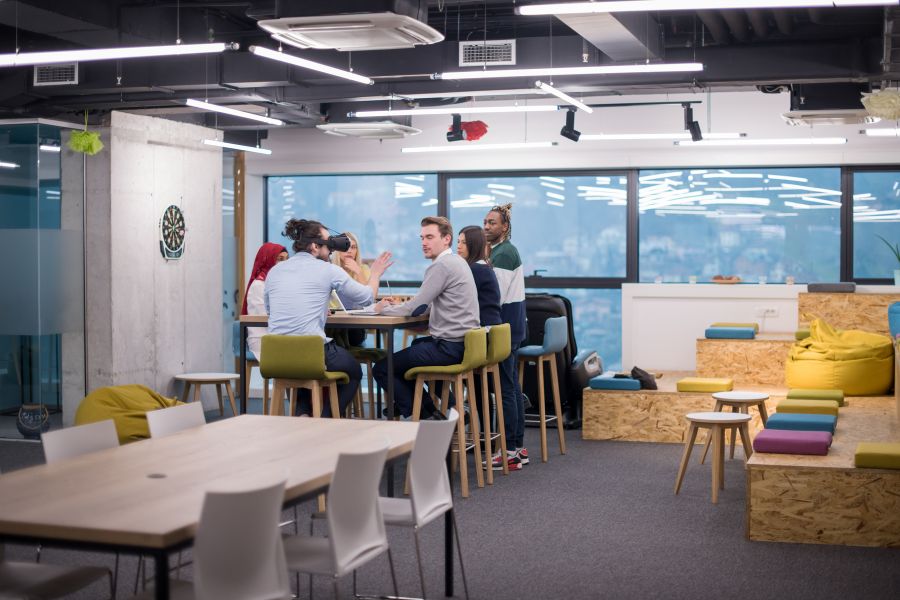
Incorporating Biophilic Design Elements: Picture this – bringing a slice of nature into your workspace. That’s what biophilic design is all about, and it’s becoming a big hit in interior design circles. By adding things like indoor plants, natural light, and earthy textures, co-working spaces can feel like a breath of fresh air. Think living green walls, skylights that let in sunshine, and touches of wood here and there. Not only does it look pretty, but it also boosts air quality and helps keep stress levels in check.
Creating Zones for Different Work Styles: We all work differently, right? Some of us thrive in quiet corners, while others need a bit of buzz to get their creative juices flowing. That’s why it’s smart to divide co-working spaces into different zones. You’ve got your quiet spots for deep focus, complete with comfy chairs and soundproofing. Then there are the communal areas, perfect for bouncing ideas off each other or just taking a breather. With clear zones, everyone can find their sweet spot without stepping on anyone else’s toes.
Utilizing Multi-functional Furniture: Let’s talk about furniture that’s more than meets the eye. In co-working space interior design, where flexibility is key, multi-functional furniture is a game-changer. Imagine desks that can switch from sitting to standing height – good for your back and your productivity. Then there’s modular seating that you can rearrange depending on how many people you’re working with. And don’t forget about storage solutions built right into the furniture, keeping your space tidy and your mind clear for work. It’s all about maximizing space and style without sacrificing practicality.
Co-Working Space Design Layout
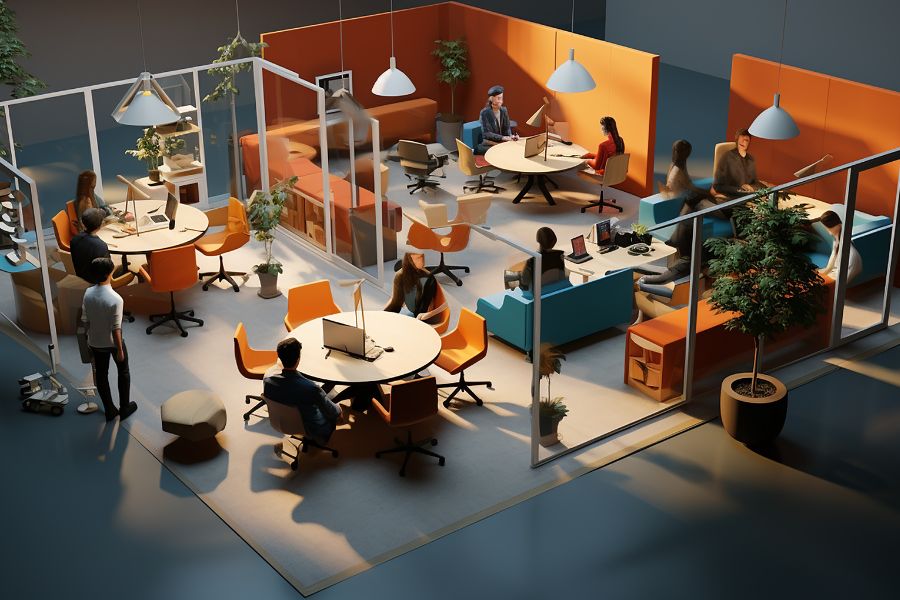
Open Plan Layout vs. Enclosed Spaces: Alright, so when it comes to setting up a co-working space interior design, one big decision is whether to go for an open plan or have some enclosed spots. Open layouts are all about that communal vibe – they encourage people to chat, collaborate, and bounce ideas off each other. On the flip side, enclosed spaces offer a bit of peace and quiet for those who need to really focus. The best co-working space design strikes a balance, giving folks options to work however they like best.
Traffic Flow and Accessibility: Ever been stuck in a cramped space where it’s hard to move around? Yeah, not fun. That’s why it’s super important to plan the layout of a co-working space interior design with traffic flow in mind. Everything should be easy to find, with clear pathways leading to common areas like meeting rooms and chill-out zones. No one wants to feel like they’re navigating a maze just to grab a cup of coffee. By keeping things accessible, designers make sure everyone can move around smoothly and get stuff done.
Maximizing Space Efficiency: Space is precious, especially in busy cities where real estate doesn’t come cheap. That’s why designers get creative with co-working space interior design, finding clever ways to make the most of every square inch. Think furniture that does double duty, like desks that can transform or partitions that can be moved around. By using space efficiently, co-working spaces can fit more people without feeling cramped, keeping everyone comfortable and productive.
How to Design a Co-Working Space

Conducting Needs Assessment and Research: Alright, let’s kick things off with some detective work. Before diving into designing a co-working space interior design, it’s crucial to understand who you’re designing for. That means talking to potential users, asking them what they need, how they work, and what would make their lives easier. This could involve surveys, interviews, or just hanging out and observing. By digging deep into what people really want, designers can create a space that’s tailor-made for its users, making them happier and more productive in the long run.
Collaboration with Stakeholders and Clients: Designing a co-working space interior design is like putting together a puzzle – you need all the pieces to fit just right. That’s why it’s essential to work closely with everyone involved, from property owners to future occupants. By getting everyone on the same page and sharing ideas, designers can ensure that the final space meets everyone’s needs and goals. Plus, keeping the lines of communication open means that any issues can be addressed early on, saving time and headaches down the line.
Iterative Design Process and Prototyping: Designing a co-working space interior design isn’t a one-and-done deal – it’s more like a journey with lots of twists and turns. Designers often start by creating mockups or prototypes to test out different ideas and see what works best. This allows them to fine-tune the layout, furniture arrangements, and design elements before the big reveal. By being open to experimentation and willing to make changes along the way, designers can create a space that’s not just functional, but also inspiring and comfortable for its users.
Color Palette in Interior Design

Impact of Colors on Mood and Productivity: Alright, let’s dive into how colors can really set the vibe in co-working space interior design. Ever noticed how certain colors just seem to give off a certain feeling? It’s not just in your head – it’s all about color psychology, and it’s super important in co-working space interior design. Warm colors like orange and yellow can really amp up energy levels and get those creative juices flowing, which is perfect for brainstorming and collaborating.
Choosing a Harmonious Color Scheme: Now, let’s chat about picking the perfect colors to make everything in a co-working space interior design look awesome together. It’s all about striking that balance just right. Designers use color theory to come up with color schemes that just feel natural. They might go for complementary colors that really pop together or opt for a more subtle look with analogous shades.
Incorporating Brand Identity: Last but definitely not least, let’s talk about giving a co-working space interior design some personality. It’s not just about making things look good – it’s also about reflecting the brand that it belongs to. Whether it’s using company colors, logo designs, or themed decorations, designers can really make a space feel like it’s part of a specific community or company.
Case Studies in Interior Design
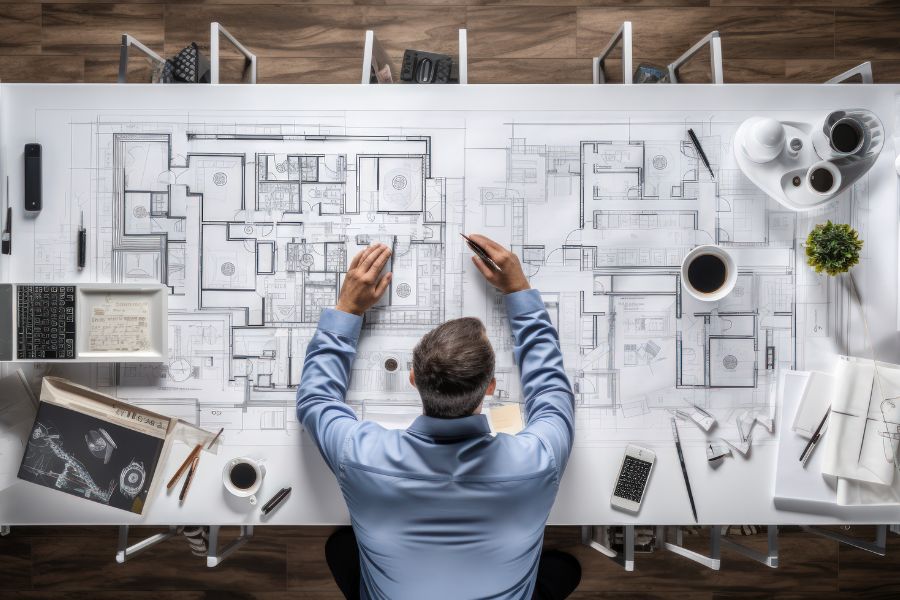
Studying real-life examples of successful co-working space interior design gives us some serious food for thought. By looking at how others have nailed it, we can pick up some valuable tips and tricks for our own designs. From funky little co-working spots in the heart of the city to sprawling corporate campuses, each case study brings its own insights into how design can totally change the way we work and connect with others.
Lasting Impressions
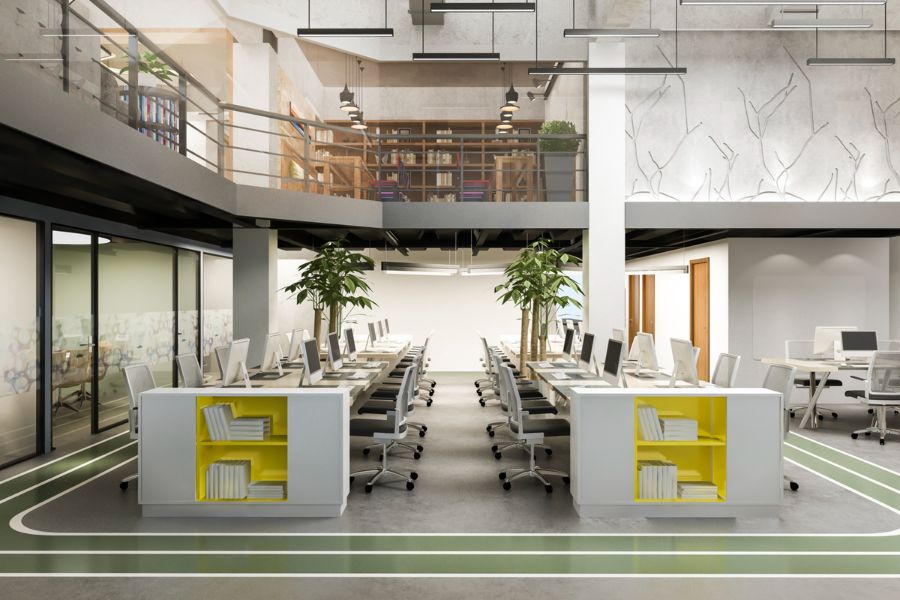
As Studio A, an interior design company, crafting co-working space interior design is akin to shaping the future of work – an ever-evolving canvas. By remaining vigilant for opportunities to enhance spaces with flexibility, collaboration, and a sense of community, our designers can leave a lasting impact. With the increasing demand for co-working spaces, now is the prime moment to infuse our designs with creativity. By staying attuned to the desires and requirements of our clients, we can ensure that our interior designs for co-working spaces resonate with vitality and innovation, fostering an atmosphere teeming with energy and inspiration for the foreseeable future.
FAQs – Frequently Asked Questions
Why is co-working space interior design important?
A. Co-working space interior design is crucial because it shapes the environment where people work, collaborate, and interact. A well-designed co-working space can enhance productivity, creativity, and overall satisfaction among its users.
How do designers approach co-working space interior design?
A. Designers approach co-working space interior design by conducting thorough needs assessments and research. They engage with potential users to understand their work habits, preferences, and requirements. This ensures that the design is tailored to the specific needs of the co-working community.
What is the role of collaboration in co-working space interior design?
A. Collaboration is essential in co-working space interior design. Designers work closely with stakeholders, including property owners and future occupants, to ensure that the final space meets everyone’s needs and goals. Open communication and sharing of ideas are key to creating a successful co-working environment.
How does the iterative design process benefit co-working space interior design?
A. The iterative design process involves creating mockups or prototypes to test different ideas and gather feedback. This allows designers to fine-tune the layout, furniture arrangements, and design elements before final implementation. By staying open to experimentation and making changes along the way, designers can create a space that is functional, inspiring, and comfortable for its users.
What considerations should be made when incorporating brand identity into co-working space interior design?
A. When incorporating brand identity into co-working space interior design, designers should align the design with the brand’s values and message. This can be achieved through the use of company colors, logo designs, or themed decorations. By creating a space that reflects the brand’s identity, occupants feel a stronger connection to the community or company they belong to.
Image Reference: Freepik
Disclaimer: All trademarks, logos, and brand names are the property of their respective owners. All company, product, and service names used in this website are for identification purposes only. Use of these names, trademarks, and brands does not imply endorsement.
